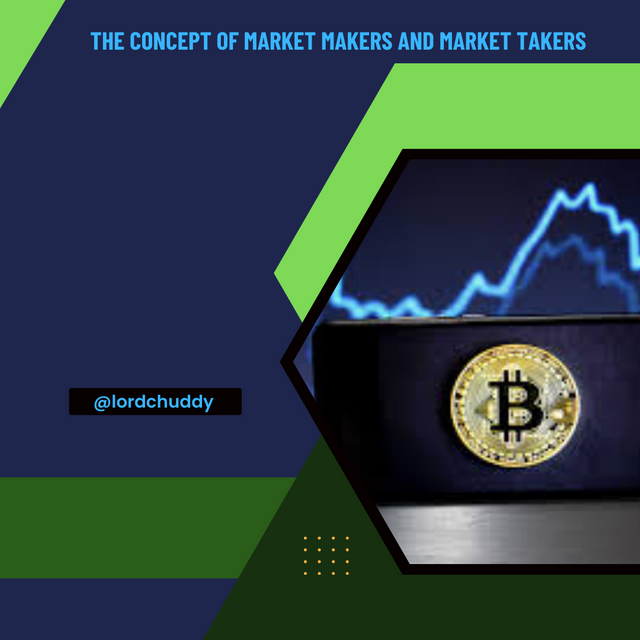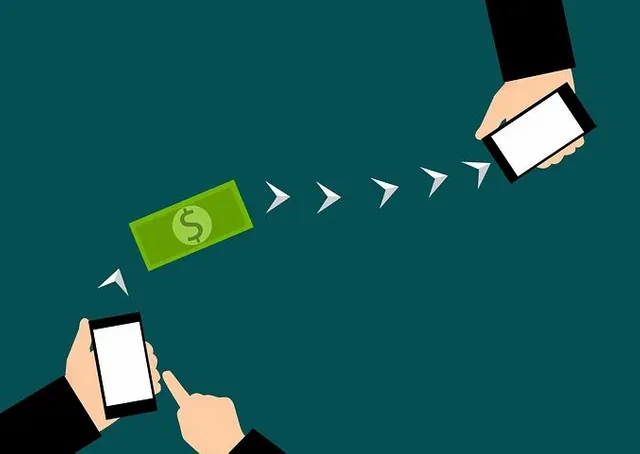UNDERSTANDING THE CONCEPT OF MARKET MAKERS AND MARKET TAKERS
Hey guys,
Welcome to my blog.

We'll talk about market makers and takers today because every trader falls into one of these categories without even realizing it. This makes it crucial that we discuss it.
Let's begin by first taking a closer look at liquidity, which will correctly aid us in comprehending our topic for today.
Before we can properly discuss makers and takers, we need to talk about liquidity. When a person uses the terms "liquid" or "illiquid," they are referring to how easily an item can be sold.
It is quite easy to exchange an ounce of gold for cash in a short period of time, making it a very liquid asset. Sadly, a ten-meter-tall statue depicting the CEO of Binance riding a bull is a very volatile asset. Despite the fact that it would look wonderful in anyone's front garden, it is not for everyone.
Market liquidity is a similar, albeit vastly different, idea. In a liquid market, you can easily buy and sell assets at competitive prices. The asset is in great demand from buyers, while it is in strong supply from sellers.
Buyers and sellers typically meet in the middle due to the level of activity; the lowest sell order (or offer price) will be similar to the highest buy order (or bid price). As a result, there would not be much of a difference between the greatest offer and the lowest ask (or tight).
An illiquid market, on the other hand, lacks all of these traits. Because there is little demand, it will be challenging to sell an asset for a fair price. As a result, the bid-ask spread on illiquid markets is much wider than on liquid ones.
-Market markers
Exchanges typically employ an order book to determine an asset's market value. All of the offers to buy and sell made by its users are gathered here. As a directive, you could put something like this: For instance, 50 BTC would cost $10,000. This is entered into the order book and will be filled when the cost exceeds $10,000.
You must first announce your plans by entering them in the order book before placing an order similar to the one that is described. Because you essentially "made" the market, you are a maker. The exchange works like a grocery store where you add your own inventory while clients pay a fee to place products on the shelves.
Large merchants and institutions frequently use market makers (such as those specializing in high-frequency trading). Certain order types that aren't immediately executed allow smaller traders to turn into makers.
It is important to remember that placing a limit order does not ensure that you will receive a maker order. Decide when to place your order if you want to be sure that it is recorded in the order book before being filled.
-Market takers
If we remain with the store scenario, you're most likely stocking the shelves with your merchandise for customers to purchase. That individual is the taker. They are consuming the liquidity you provide rather than purchasing bean tins from the shop.
Think about it: by putting an offer on the order book, you increase the liquidity of the exchange by facilitating trades between customers. On the other side, a taker takes some of that liquidity away. You are able to buy or sell using a market order at the going rate. When they do this, existing orders in the order book are immediately filled.
If you've ever placed a market order to trade on Binance or another cryptocurrency exchange, for instance, you have acted as a taker. Limit orders, however, also let you act as a taker. The truth is that you are a taker each time you fill someone else's position.
-Fees
By charging consumers who are matched trading fees, several exchanges generate revenue. This suggests that you will pay a small fee each time you place an order and it is completed. However, the amount fluctuates depending on your function and trading volume, as well as from exchange to exchange.
Because they add liquidity to the market, makers are frequently awarded a refund. That helps business since it lets potential customers consider, "Wow, check out the tremendous liquidity on this platform. I ought to trade here." Since trades will be simpler to execute, a venue with more liquidity will be more enticing than one with less.
Because they do supply liquidity whereas takers do not, market makers typically pay lower costs than market takers.
As a conclusion to the whole thing, we should be aware that takers satisfy orders, although market markets are responsible for establishing them. Market takers typically pay higher costs than market providers since market markets act as liquidity suppliers.




Tweet
https://twitter.com/Changeyouseekk/status/1557310382607327234?s=19
Saludos amigo, en los últimos 7 días has recibido 3 votos de SC05, por lo tano esta vez, no recibirás el voto. Esperamos ver tus próximas publicaciones.
@pelon53
There's no problem.
Thank you for the info